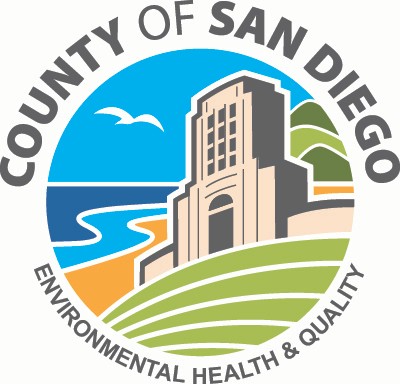Guidance For Businesses and Facilities
Flood Readiness Prevention and Tips
Hazardous Materials and Waste Management
If you handle, store and/or work with hazardous materials or hazardous wastes, these tips may help minimize/eliminate releases or spills during flooding. If there is a spill or release of hazardous material or hazardous waste, report the spill immediately to the State Warning Center at 1-800-852-7550.
If it is an emergency phone ‘911’ first.
HAZMAT Spill Reporting, Call the State Warning Center
1-800-852-7550
Storage
- Make sure that drums, tanks, and other containers of hazardous materials/waste, including used oil, are closed and leakproof.
- Ensure all containers of hazardous wastes are labeled with the words "hazardous waste” that includes a description of the contents, the name and address of the waste generator, and the date when waste was first placed into the container.
- Secure drums and other containers to prevent water intrusion, damage and from being washed away.
- Store containers in a safe location – if necessary, relocate away from lower areas such as a basement, vault, underground area, and away from flood zones/storm channels.
- Do not pump water or drain containment areas around storage tanks, equipment, or drums that appear contaminated with oil or other hazardous materials into a storm drain or sewer. Collect the contaminated water in an appropriate container for a waste determination and proper disposal at a later time.
- Take all necessary measures to ensure equipment and spill kit supplies are secured, will not float away, or break open.
Disposal
- If there is a potential for flooding, dispose of hazardous waste using a State of California registered hazardous waste transporter and permitted disposal facility. A permanent or temporary EPA ID number will be required. Maintain copies of shipping manifests and receipts upon disposal of any hazardous waste for three years.
Hazardous Materials Aboveground and Underground Storage Tanks
- If flooding appears likely, aboveground tank owners and operators should inspect their tanks, including pumps and dispensing systems, to verify the equipment is secured and anchored. It is suggested that tank owners or operators secure all openings in the tank and tank sumps. In the event of flooding, shear valves on underground storage tanks should be closed or "tripped" and power should be shut off to the dispensing system (pumps). Shutting off the power prevents product from leaving the system if floating debris knocks over a fuel dispenser.
- Tank owners or operators need to call ‘911’ in an emergency and the County of San Diego Hazardous Materials Division at (858) 505-6657 if a storage tank becomes severely damaged, flooded, hazardous materials/waste is released to the environment, or the threat of a release is imminent. Notification to the State Warning Center at 1-800-852-7550 is also required.
Power Outages
- For facilities that have emergency generators available it is important to routinely check generators before an emergency to make sure they will operate properly and have enough fuel.
Lift Pump Failures
- A problem during flooding is overworked lift pumps that fail or become clogged. If possible, lift pumps should be inspected and serviced routinely so they can operate at peak efficiency in an event of a flood as water flows begin to rise. If your lift pumps have had recurring maintenance issues involving specific parts or components, it is suggested that you keep spare replacement parts available to repair pumps in emergency situations.
- Do not pump water out of lift stations that appear contaminated with oil or other hazardous materials into a storm drain or sewer. Collect the contaminated water in an appropriate container or tank for a waste determination and proper disposal at a later time.
Contact the County of San Diego Hazardous Materials Division at (858) 505-6880 or by Email hmdutyeh@sdcounty.ca.gov if you have questions or need further guidance





